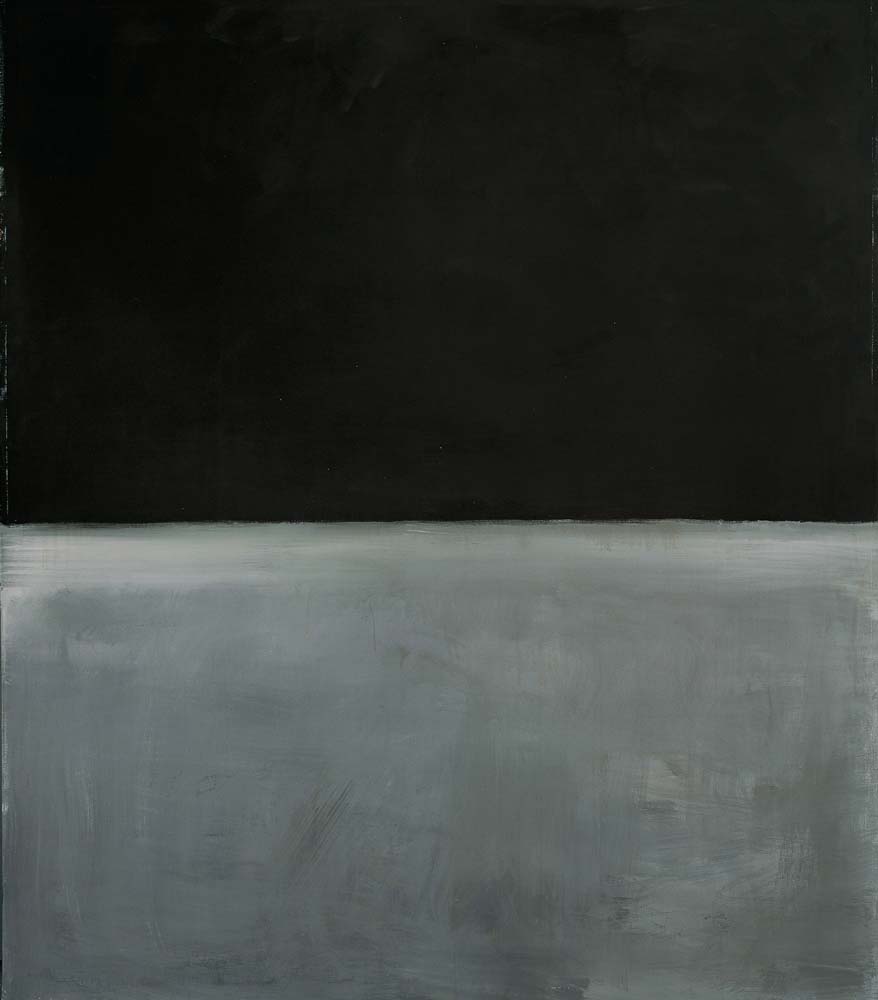| Untitled (Black on Grey) | |
|---|---|
 |
|
| Artist | Mark Rothko |
| Year | 1970 |
| Medium | Acrylic on canvas |
| Location | National Gallery of Art, Washington, D.C. |
| Dimensions | 80.0 in × 69.1 in |
| 203.3 cm × 175.5 cm | |
| Mark Rothko Famous Paintings | |
| White Center (Yellow, Pink and Lavender on Rose), 1950 | |
| Four Darks in Red, 1958 | |
| Untitled (Black on Grey), 1970 | |
| No. 3/No. 13 (Magenta, Black, Green on Orange), 1949 | |
| Orange, Red, Yellow, 1961 | |
| Black on Maroon, 1958 | |
| Complete Works |
A casual look at Untitled (Black on Grey), by Mark Rothko, might cause a person to dismiss it as something that their child could have done in kindergarten even though the skill and passion that went into its creation is way beyond the skill of the average child. The work, an acrylic on canvas, is probably best seen up close, and in person. It is now in the National Gallery of Art in Washington D.C.
Real Simple — Or Is It?
Untitled (Black on Grey) is painted on a canvas 80 inches by 69.1 inches. The top half is black and the bottom half is gray. A white perimeter frames the entire scene. But a closer examination of the painting reveals more than this.
The black rectangle at the top of the canvas is not just an expanse of black paint, but layerings of shades of black, a surprise to people who would not think that black can come in different shades or tonalities. The gray, also, is not simply gray, but different shades of gray with hints of lavender and hints of brown. The viewer can more easily see Rothko’s brushstrokes in the gray bottom half.
About Death? Or the Moon?
Rothko painted Untitled (Black on Grey) in 1970 when his health was failing, and he could only work on canvas that was stretched and taped around the edges, thus the painting’s otherwise mysterious white border. It is one of a series of Rothko’s black and grey paintings.
The artist claimed that these works symbolized death, and indeed, he killed himself soon after finishing the work. However, the viewer can project many things onto Untitled (Black on Grey). It is possible that when the painting was first unveiled it reminded viewers of a moonscape seen by an Apollo astronaut who had so recently walked on the moon itself.
The gray presented Earth’s arid but fascinating satellite, while the black was the deep black of outer space. Or maybe it is a window with the black shade half drawn, looking out on a fog. Despite the artist’s interpretation, the viewer is free to bring his own interpretation to this abstract work of art.